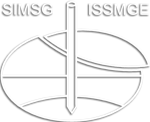Exploring the role of fabric anisotropy in cyclic liquefaction resistance under non-hydrostatic consolidation: insights from DEM analysis
Exploring the role of fabric anisotropy in cyclic liquefaction resistance under non-hydrostatic consolidation: insights from DEM analysis
This study investigates the cyclic liquefaction resistance of granular materials under non-hydrostatic consolidation using 3D discrete element method (DEM) simulations. The study specifically examines how various sample preparation techniques affect the cyclic liquefaction resistance of polydisperse spherical particle samples with a Kc value of 0.5, where Kc represents the ratio of initial horizontal to vertical normal stresses. The results reveal that the choice of sample preparation technique significantly affects the cyclic liquefaction resistance of the samples. Furthermore, this study explores the inherent fabric of the samples using coordination number and contact-normal fabric anisotropy, and demonstrates that it plays a critical role in controlling the cyclic liquefaction resistance of granular materials under non-hydrostatic consolidation. The study emphasizes the significance of considering the inherent fabric in understanding the behavior of granular materials under non-hydrostatic consolidation. This can inform the design of experiments and the development of constitutive models to explore the interplay between sample preparation techniques, fabric anisotropy, and cyclic liquefaction resistance.
Ming Yang; Mahdi Taiebat
8th International Symposium on Deformation Characteristics of Geomaterials (ISDCG2023)
II.5) Cyclic and dynamic behaviour
Discrete Element, Liquefaction Engineering
